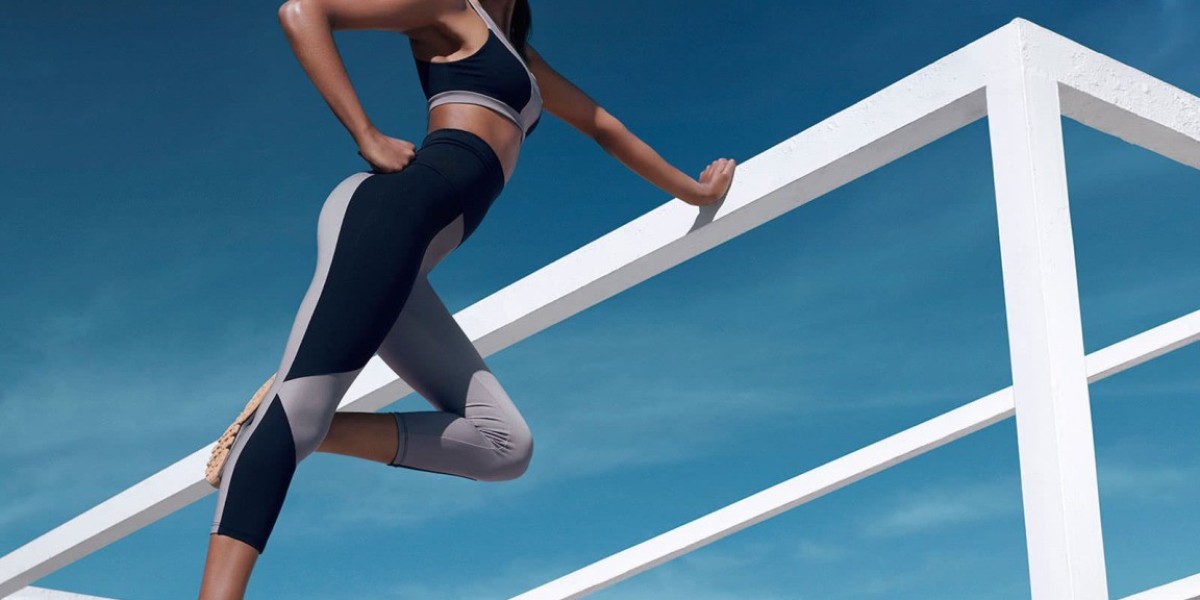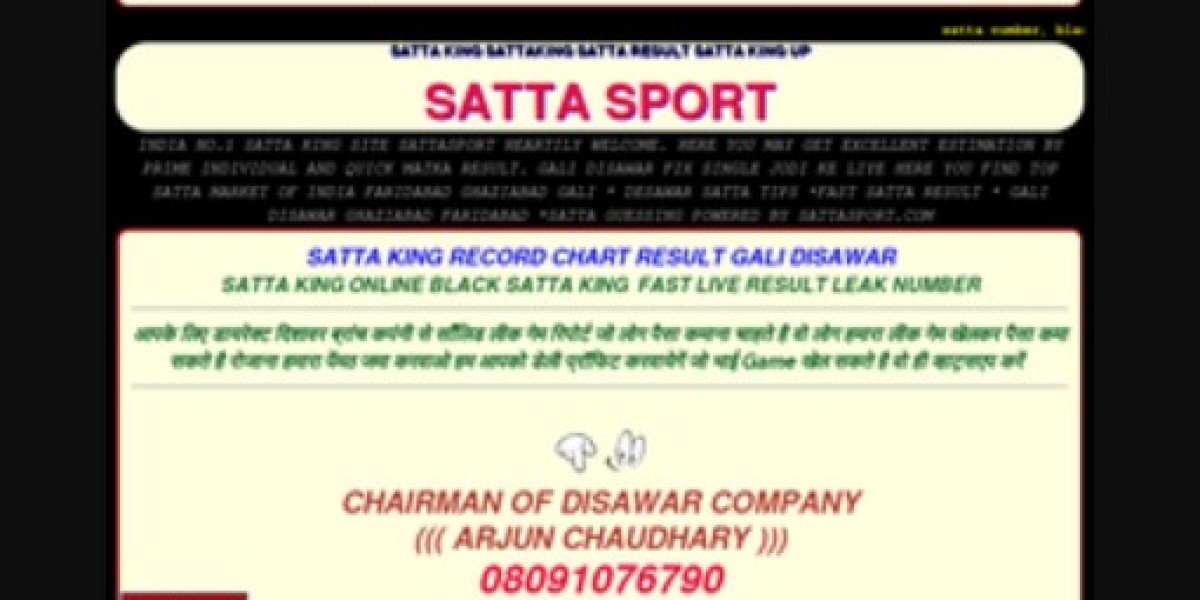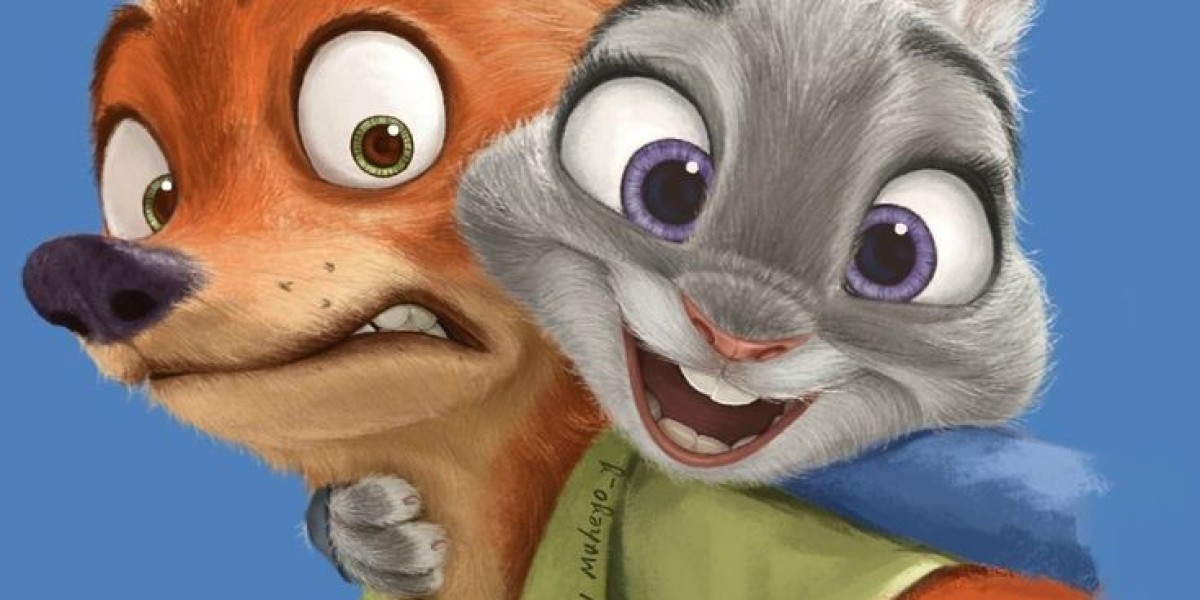In the dynamic world of athletic fashion, the Sports Fitness Clothing Market is making waves like never before. With the global push towards health and wellness, the demand for sportswear and activewear has surged, propelling this market into the limelight. According to recent statistics, the market for waterproof breathable fabrics, a significant component of sports fitness clothing, is expected to grow from USD 2.08 billion in 2023 to a whopping USD 2.66 billion by 2028, marking a substantial CAGR of 5.02%.
The Fabric of Change
One cannot discuss sports fitness clothing without acknowledging the innovations in fabric technology. Waterproof breathable fabrics, including materials like Polytetrafluoroethylene (PTFE), Polyester, and Polyurethane, are leading the charge. These materials not only provide durability but also offer the comfort athletes need, allowing sweat to evaporate while keeping external moisture at bay.
Driving Factors Behind the Surge
1. Athleisure Trend:
The fusion of athletic wear with leisurewear, often termed as athleisure, has transformed the sports fitness clothing landscape. A testament to this trend is the projection that the athleisure market will escalate from USD 277 billion in 2021 to a staggering USD 381 billion by 2026.
2. Asia-Pacifics Dominance:
Emerging economies in the Asia-Pacific region, particularly China and India, are becoming significant players. With events like the 2022 Asian Games and a rising fitness culture, the regions sports fitness clothing market is booming. In fact, the Asia-Pacific region is poised to be the fastest-growing market, presenting lucrative opportunities for stakeholders.
Market Statistics:
- Market Size (2023): USD 2.08 Billion
- Projected Market Size (2028): USD 2.66 Billion
Market Growth:
- CAGR (20232028): 5.02%
Additionally, its highlighted that the Asia-Pacific region is the fastest-growing market for waterproof breathable textiles, and North America stands as the largest market for these textiles.
These figures and growth rates indicate a positive trajectory for the waterproof breathable textiles market over the forecast period from 2023 to 2028.
Market Size of Sports and Fashion Apparel Market
The Sports Apparel Market Size, a subset of the broader apparel industry, has experienced substantial growth. Recent statistics indicate that the market for waterproof breathable fabrics, a crucial component of sports fitness clothing, is poised to reach USD 2.66 billion by 2028, from USD 2.08 billion in 2023.
Analysis of the Waterproof Breathable Textiles Market Size
The Waterproof Breathable Textiles market showcases a promising growth trajectory as depicted by the figures provided:
- Study Period:The markets analysis spans a decade, from 2017 to 2027, providing a comprehensive view of long-term trends and potential shifts in demand and supply dynamics.
- Market Size in 2023:As of 2023, the market for Waterproof Breathable Textiles was valued at USD 2.08 billion. This indicates a substantial market presence and a clear indication of the industrys significance in the textile sector.
- Projected Growth to 2028:The market is expected to witness growth, with a forecasted valuation of USD 2.66 billion by 2028. This growth signifies an upward trajectory and showcases the potential opportunities within the sector.
- Compound Annual Growth Rate (CAGR):The CAGR from 2023 to 2028 stands at 5.02%. Such a CAGR is indicative of a healthy growth rate, suggesting consistent demand, innovation, and market expansion.
- Regional Dynamics:The report highlights the Asia-Pacific region as the fastest-growing market. This emphasizes the shifting dynamics of the global textile industry towards Asia, driven by factors like increasing industrialization, consumer demand, and manufacturing capabilities. Conversely, North America emerges as the largest market, underscoring its established industry infrastructure and consumer base.
In summary, theAthletic apparel market sizeanalysis underscores the significance and growth potential of the Waterproof Breathable Textiles sector. With consistent growth projections and regional dynamics at play, stakeholders can anticipate evolving opportunities and challenges in the coming years.
Read More-Global Innerwear Market: Trends Future Prospects
Market Growth of Sports Fitness Clothing Market
Several factors have contributed to the rapid Athletic apparel market growth:
- Athleisure Trend:The melding of athletic wear with casual attire has expanded the markets consumer base.
- Asia-Pacific Surge: Emerging economies in this region, coupled with major sporting events, have propelled market growth.
- Innovations in Fabric Technology:Advanced materials that enhance performance and comfort have fueled consumer demand
The Competitive Arena of Sports Clothing Market
When it comes to the Sports Fashion and apparel Market, the competition is fierce. Industry titans such as W. L. Gore Associates Inc., Toray Industries Inc., and Polartec are continually pushing boundaries. Their relentless pursuit of innovation, evident from collaborations and cutting-edge products, underscores the markets dynamism. TheSports Fitness Clothing Marketis a vibrant and dynamic space, characterized by innovation, competition, and consumer-centric offerings. Among the myriad brands and companies operating in this sector, several major players have carved out significant niches, driving trends, setting standards, and influencing the markets trajectory. Heres a closer look at some of these industry leaders:
1. Nike, Inc.
Overview: Nike is a global behemoth in the sports and fitness industry, renowned for its cutting-edge designs, innovative technologies, and iconic branding.
Key Highlights:
- Diverse product range spanning footwear, apparel, equipment, and accessories.
- Emphasis on sustainability with initiatives like Move to Zero aiming for zero carbon and zero waste.
- Collaborations with top athletes and celebrities, creating exclusive product lines.
2. Adidas AG
Overview: Adidas, a German multinational corporation, is a powerhouse in the sportswear segment, blending performance and style seamlessly.
Key Highlights:
- Strong focus on innovation, exemplified by technologies like Boost cushioning and Primeknit fabric.
- Robust e-commerce presence complemented by a vast global retail network.
- Initiatives promoting diversity, inclusivity, and sustainability.
3. Under Armour, Inc.
Overview: Under Armour has rapidly risen through the ranks, becoming synonymous with performance-oriented sportswear and apparel.
Key Highlights:
- Pioneering technologies such as UA HOVR and UA RUSH, designed to enhance athletic performance.
- Strategic partnerships with professional athletes and teams, bolstering brand credibility.
- Expansion into digital fitness platforms, integrating technology with sportswear.
4. Puma SE
Overview: Puma, a stalwart in the sportswear industry, is known for its distinctive designs, innovative products, and a rich heritage rooted in athletics.
Key Highlights:
- Collaborations with renowned designers and celebrities, creating buzzworthy collections.
- Strong brand presence in both performance and lifestyle segments.
- Sustainability initiatives, including the use of recycled materials and eco-friendly manufacturing processes.
5. Lululemon Athletica Inc.
Overview: Lululemon, primarily recognized for its premium yoga-inspired athletic apparel, has expanded its footprint in the broader sportswear market.
Key Highlights:
- Signature fabrics like Luon and Nulu, offering unparalleled comfort and performance.
- Emphasis on community engagement, fostering a loyal customer base.
- Expansion into mens apparel, footwear, and other product categories, diversifying its offering.
W. L. Gore Associates Inc.
Overview: W. L. Gore Associates is renowned for its innovative materials and fabrics, especially Gore-Tex, a waterproof, breathable fabric membrane used in various outdoor and technical applications.
Key Strengths: Gore-Tex is one of the most trusted brands for waterproof and breathable membranes, ensuring that wearers remain dry and comfortable in challenging conditions.
Innovation:Continual research and development have enabled Gore to expand its product range, offering solutions for various industries beyond apparel, including medical and aerospace.
Toray Industries Inc.
Overview: Toray Industries is a multinational corporation with a diversified portfolio, including fibers and textiles, carbon fiber composite materials, and more.
Key Strengths:Recognized for producing high-quality synthetic fibers and textiles that cater to a wide range of industries, from apparel to automotive.
Innovation:Toray consistently invests in RD, focusing on sustainable materials and advanced composites, positioning itself as a leader in eco-friendly and high-performance materials.
Polartec
Overview:Polartec specializes in developing innovative fabric technologies, primarily known for its fleece and synthetic insulation materials used in outdoor apparel.
Key Strengths:Polartec fabrics are renowned for their warmth-to-weight ratio, breathability, and durability, making them popular among outdoor enthusiasts and professionals.
Innovation:The company continually evolves its fabric technologies, introducing new materials that offer enhanced performance, sustainability, and comfort.
THE NORTH FACE, A VF COMPANY
Overview:The North Face is a well-established brand within the outdoor apparel and equipment industry, offering a wide range of products from jackets and footwear to tents and backpacks.
Key Strengths: Recognized globally for its commitment to quality, innovation, and performance-driven products that cater to outdoor enthusiasts and athletes alike.
Innovation:The North Face invests in product development and collaborates with athletes and explorers to create gear that meets the demands of extreme conditions while also focusing on sustainability and ethical production.
SympaTex Technologies GmbH
Overview:SympaTex specializes in producing environmentally friendly, 100% waterproof, windproof, and breathable membranes used in various applications, including apparel, footwear, and accessories.
Key Strengths:SympaTex membranes are known for their ecological credentials, as they are made from recycled or renewable raw materials and are recyclable themselves.
Innovation:The company places a strong emphasis on sustainability and innovation, continually refining its membrane technologies to offer improved performance and environmental benefits.
In summary, these major players in the outdoor and technical apparel industry are at the forefront of innovation, continually pushing boundaries to develop materials and products that meet the evolving needs of consumers while also addressing sustainability concerns. Their commitment to quality, performance, and environmental responsibility cements their position as leaders in the market

Market Segmentation of Sports Clothing Market
The Athletic Apparel market segmentation for the Waterproof Breathable Textiles Market and elucidate each segments significance and relevance:
1. By Raw Material:
- Polytetrafluoroethylene (PTFE): Often recognized for its non-stick properties, PTFE-based materials are known for their durability and resistance to extreme conditions. In the context of waterproof breathable textiles, PTFE-based materials might offer superior waterproofing and breathability, making them suitable for specialized applications.
- Polyester: Polyester is a versatile synthetic fiber widely used in various textile applications. In the realm of waterproof breathable textiles, polyester-based materials might provide a balance between affordability, comfort, and performance.
- Polyurethane: Known for its elasticity and resilience, polyurethane is another material used in waterproof breathable textiles. Its properties might make it suitable for applications requiring flexibility and durability, such as sportswear or protective gear.
- Other Raw Materials: This category likely encompasses other materials or blends that may not fit strictly into the aforementioned categories but still play a role in the waterproof breathable textiles market. This could include innovative materials or combinations designed to enhance specific properties like stretch, insulation, or sustainability.
2. By Textile:
- Densely Woven: Densely woven textiles offer a tight structure, which can enhance waterproofing and wind resistance. These textiles might be favored for applications requiring high levels of protection against the elements.
- Membrane: Membrane textiles often feature a specialized layer that allows for breathability while preventing water penetration. These textiles might be utilized in applications where moisture management is crucial, such as sportswear or outdoor gear.
- Coated: Coated textiles have been treated with a waterproof layer, often applied to the outer surface. This coating enhances the fabrics resistance to water, making it suitable for various applications ranging from apparel to industrial uses.
3. By Application:
- Sportswear and Activewear: This segment likely represents textiles designed for athletic and outdoor activities. The emphasis here would be on comfort, performance, and durability, with materials chosen to enhance breathability and moisture management.
- Protective and Military: Textiles in this category would prioritize durability, resilience, and protection against environmental hazards. Materials might be selected for their ability to withstand extreme conditions while providing necessary functionalities like waterproofing and insulation.
- General Clothing and Home Textile: This segment would encompass a broader range of textiles designed for everyday wear and home applications. The materials here might be chosen for their comfort, aesthetics, and functional properties suitable for diverse uses.
- Other Applications: This category could include specialized or emerging applications for waterproof breathable textiles, reflecting the versatility and evolving nature of the market.
4. By Geography:
This geographical segmentation provides insights into regional market dynamics, consumer preferences, and industry trends. Each region listed represents a distinct market with its unique characteristics and opportunities. For instance:
- Asia-Pacific: This region, encompassing major economies like China, India, and Japan, might be characterized by rapid industrialization, growing consumer markets, and increasing investments in innovative textile technologies.
- North America: The North American market, including the United States, Canada, and Mexico, might be influenced by factors such as technological advancements, consumer preferences for high-performance apparel, and a robust outdoor and sports culture.
- Europe: European markets, represented by countries like Germany, the UK, and France, might prioritize sustainability, innovation, and quality, reflecting consumer demands and regulatory trends.
- South America, Middle East, and Africa: These regions offer diverse opportunities and challenges, influenced by factors such as economic development, consumer behavior, and regional climatic conditions.
In summary, this comprehensive segmentation framework provides a structured approach to understanding the multifaceted Waterproof Breathable Textiles Market, allowing stakeholders to identify opportunities, assess market trends, and make informed decisions based on a nuanced understanding of each segments dynamics.
Future Scope, Challenges and Opportunities Of Sports Clothing Market
The future of the Sports Fitness Clothing Market looks promising with:
- Technological Advancements: Integration of smart fabrics and wearable technology.
- Sustainability: Growing emphasis on eco-friendly materials and sustainable manufacturing practices.
- Market Expansion: Penetration into untapped regions and demographic segments.
Challenges
- Intense Competition: The market is saturated with numerous brands, leading to intense competition and pricing pressures.
- Counterfeit Products: The proliferation of counterfeit products poses a threat to brand integrity and consumer trust.
- Supply Chain Disruptions: Global events, such as pandemics or trade disputes, can disrupt the supply chain, affecting market dynamics.
Technology and Product Innovations
1. W. L. Gore Associates Inc.
- Technology Product Innovation: Gore-Tex is one of the most recognized names in waterproof breathable fabrics. They use an expanded polytetrafluoroethylene (ePTFE) membrane technology that allows for breathability while preventing water penetration.
- Statistics: Gore-Tex products are widely used across various industries, from outdoor gear to medical applications, making it a dominant player in the market.
2. Toray Industries Inc.
- Technology Product Innovation: Toray is known for its various textile technologies, including waterproof breathable materials using proprietary membrane technologies.
- Statistics: As a global chemical company, Toray has a significant presence in the advanced materials sector, with a range of products serving different industries.
3. Polartec
- Technology Product Innovation: Polartec has developed various fabric technologies designed for performance and comfort, including waterproof breathable materials tailored for specific applications like outdoor apparel.
- Statistics: Polartec fabrics are widely used in the outdoor apparel industry, with a reputation for innovation and quality.
4. THE NORTH FACE, A VF COMPANY
- Technology Product Innovation: The North Face has been at the forefront of outdoor apparel innovation, incorporating various technologies, including proprietary waterproof breathable materials, in their product lineup.
- Statistics: As a part of VF Corporation, The North Face brand has a global presence and significant market share in the outdoor apparel industry.
5. SympaTex Technologies GmbH
- Technology Product Innovation: SympaTex develops and manufactures various functional materials, including waterproof breathable membranes, focusing on sustainability and performance.
- Statistics: SympaTex products are used across different industries, from outdoor apparel to footwear, highlighting their versatility and market presence.
6. Others
- Technology Product Innovation: Various other companies, including established brands and emerging startups, contribute to the waterproof breathable textiles market with their innovative materials and technologies, catering to specific niches and applications.
The Road Ahead
As we navigate the ever-evolving landscape of the Sports Fitness Clothing Market, its evident that the journey ahead is promising. With innovations in fabric technology, the rise of athleisure, and the burgeoning demand from regions like Asia-Pacific, the markets growth trajectory remains robust.
In conclusion, the Sports Fitness Clothing Market is not just about attire; its a reflection of a global shift towards a healthier, more active lifestyle. And as the statistics suggest, this market is poised for unprecedented growth, making it a compelling space for both consumers and businesses alike. Whether youre a fitness enthusiast or a business visionary, now is the time to ride the wave of this burgeoning market.









